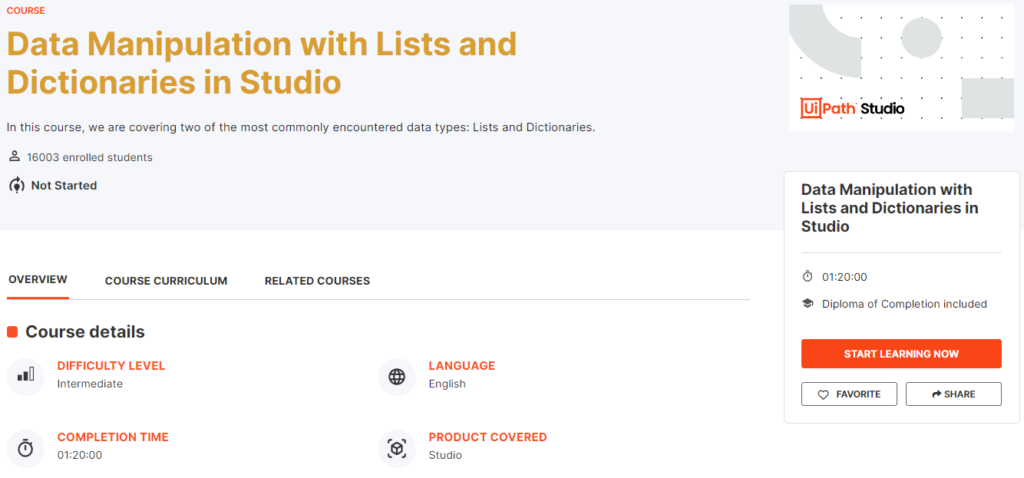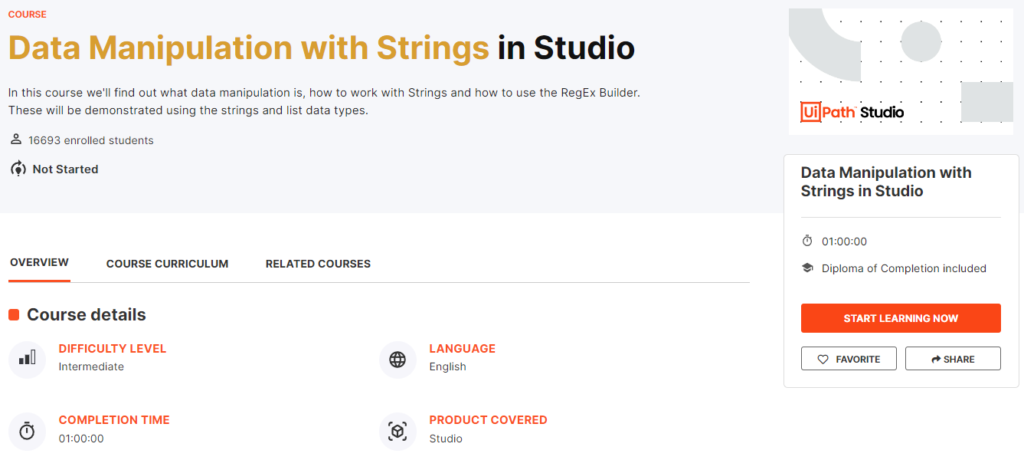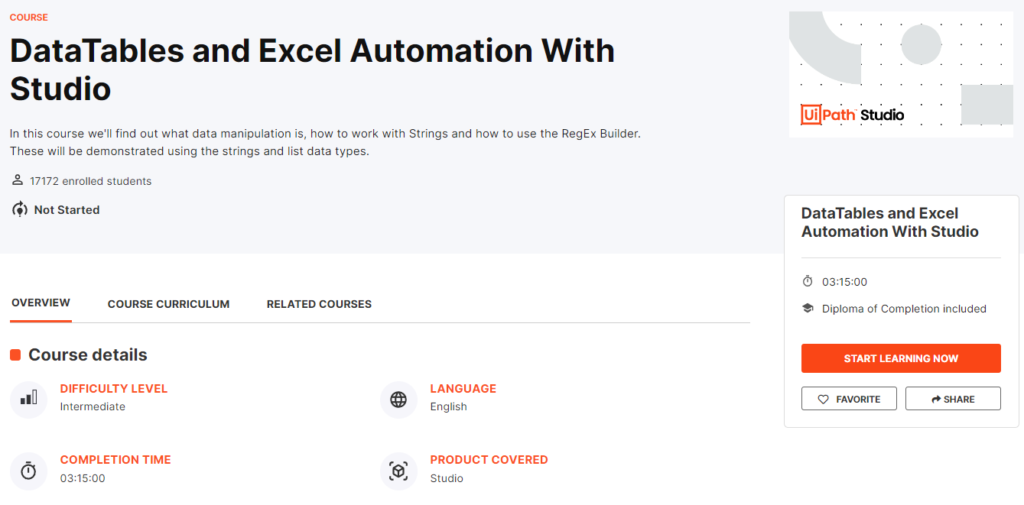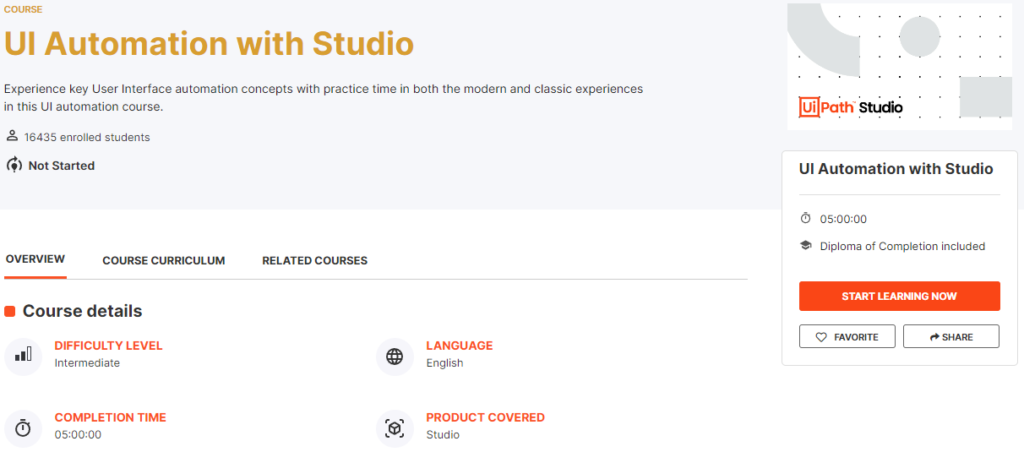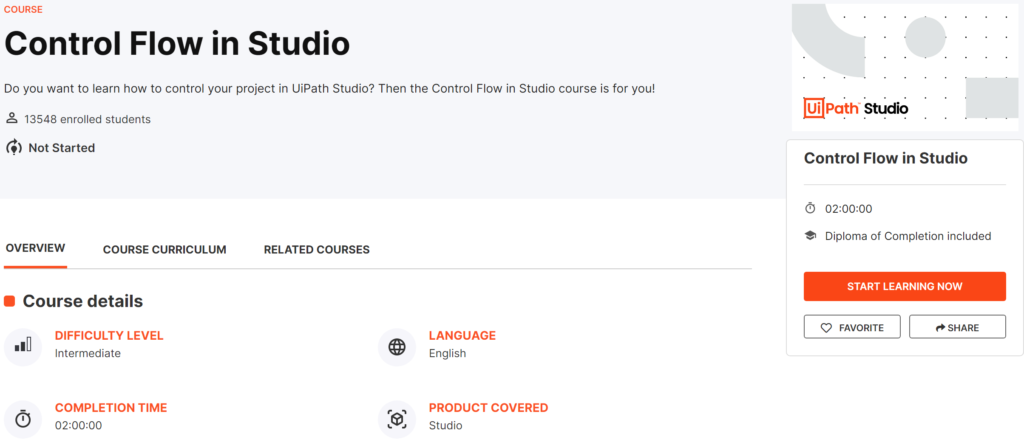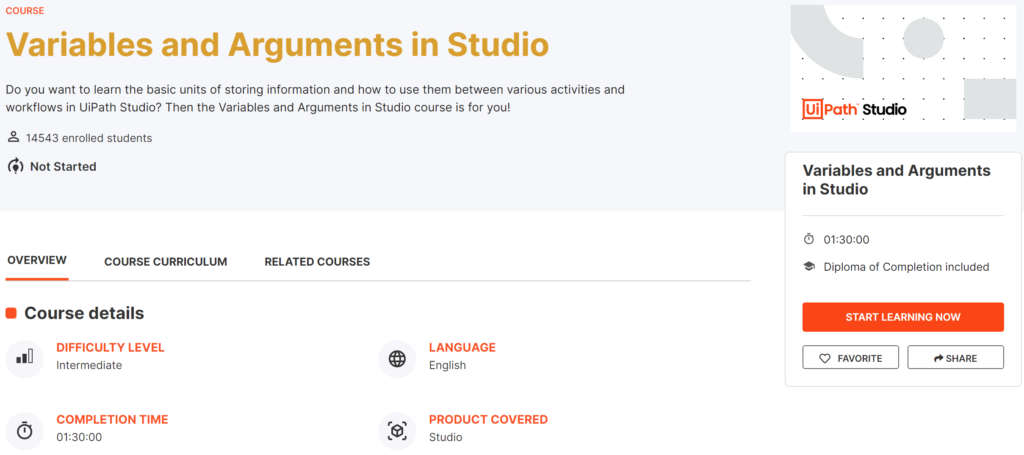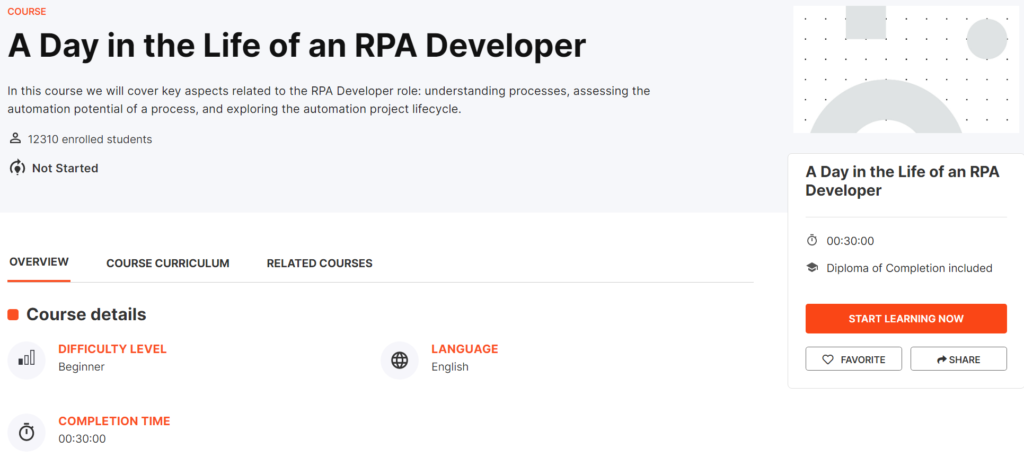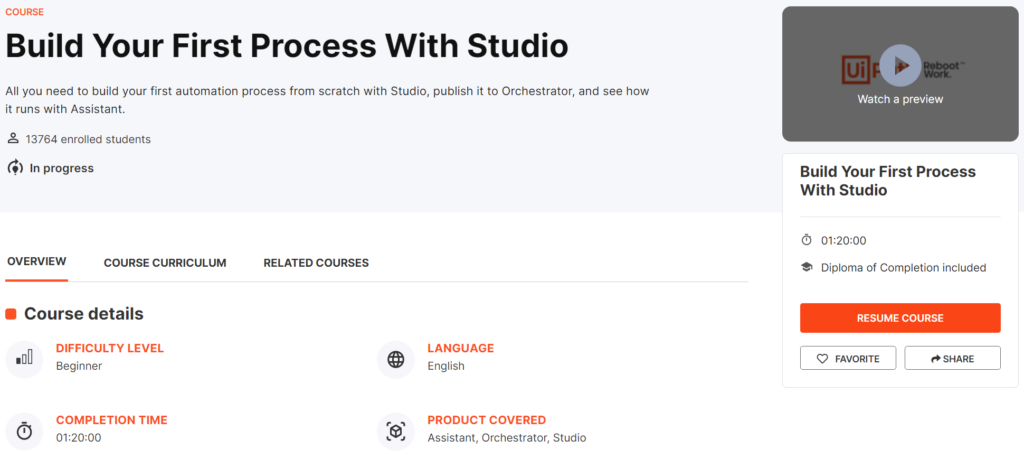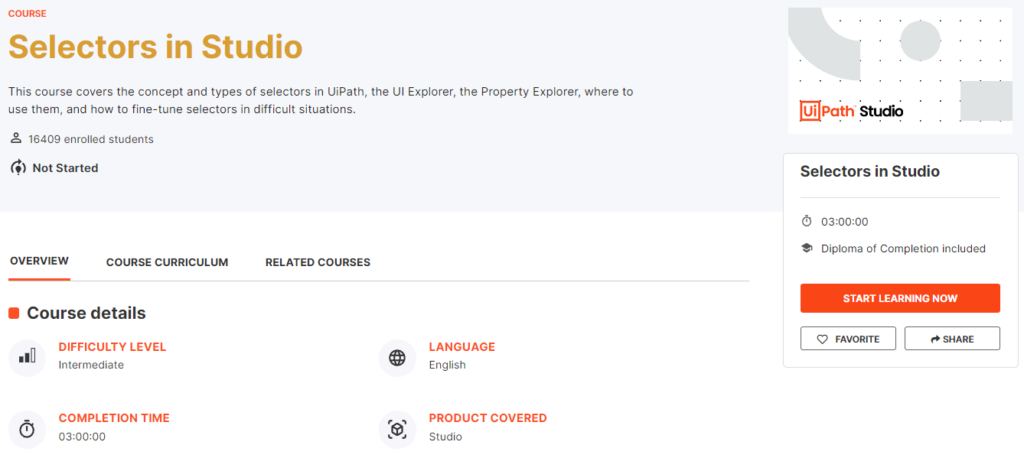
About the course
In this course, you will learn about the main targeting method for UI Automation activities: selectors. We’ll first get familiar with the concept, then we’ll get to more in-depth topics, such as the types of selectors, the UI Explorer, the Property Explorer, and configuring selectors to handle different situations.
What you will learn in this course
At the end of this course, you should be able to:
- Explain a selector and its structure.
- Explain various types of selectors and their settings when automating.
- Describe how to explore the attributes of the User Interface element.
- Explain various approaches to fine-tune selectors to make them reliable.
- Fine-tune selectors to improve element identification precision.
